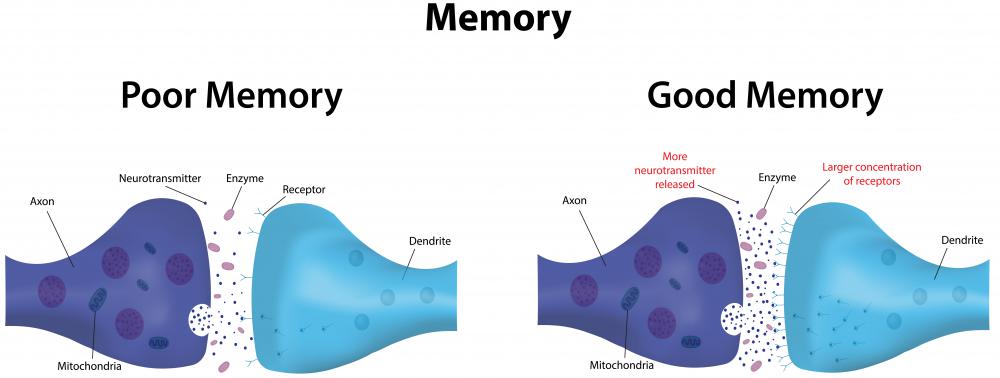At WiseGEEK, we're committed to delivering accurate, trustworthy information. Our expert-authored content is rigorously fact-checked and sourced from credible authorities. Discover how we uphold the highest standards in providing you with reliable knowledge.
What Is the Pars Compacta?
The pars compacta forms one half of the substantia nigra, a region of the midbrain near the brain stem. The primary function of the pars compacta is the production of a neurotransmitter called dopamine. Dopamine pertains to addiction, emotional responses and movement. A depletion of dopamine might lead to Parkinson's disease, and an excess might contribute to the onset of schizophrenia.
The substantia nigra consists of the superior — or upper — pars compacta and the inferior — or lower — pars reticulata. Dendrites extend from within the compacta, which deals with production, into the reticulata, which focuses on transmission. The pars compacta is tightly packed with cells tinted black from the pigment neuromelanin.

These pigmented cells produce the neurotransmitter dopamine. Dopamine aids in the transmission of signals between neurons, promotes the production of other neurotransmitters and helps control movement and feelings of reward, pleasure and pain. The dopamine in the pars compacta is transferred via axoplasmic transport to other regions of the brain, particularly the caudate and putamen in the striatum.

The melanin-containing cells can degenerate, causing dopamine levels to fall to a point at which they can no longer help regulate other neurons. It is unknown what causes this degeneration, but the deficit created can lead to the onset of Parkinson's disease. Parkinson's disease is an incurable, debilitating condition that causes tremors, rigid muscles and the gradual cessation of other movement functions.

Treatment options for Parkinson's disease include the use of the pharmaceutical blend of levodopa-carbidopa. Levodopa is in a class of medications called central nervous agents, and it can pass through the blood-brain barrier and stimulate the production of dopamine in the pars compacta. Dopamine antagonists are a class of medications that can mimic the actions of dopamine on the receptor regions, allowing their functions to continue. Neither class of medications can cure the disease. The best that Parkinson's treatment can provide is the slowing down of oncoming symptoms.

It is thought that an excess of dopamine can lead to schizophrenia. That proposition has met some controversy in the medical field because of insufficient research data. Patients who have schizophrenia, however, do show physiological differences in the substantia nigra that suggests a correlation between dopamine loss and the disease. The changes include the pars compta region showing a size decrease in the transmission terminals. First-generation antipsychotics used to treat symptoms of schizophrenia belonged to the class of dopamine antagonists.
AS FEATURED ON:
AS FEATURED ON:















Discuss this Article
Post your comments